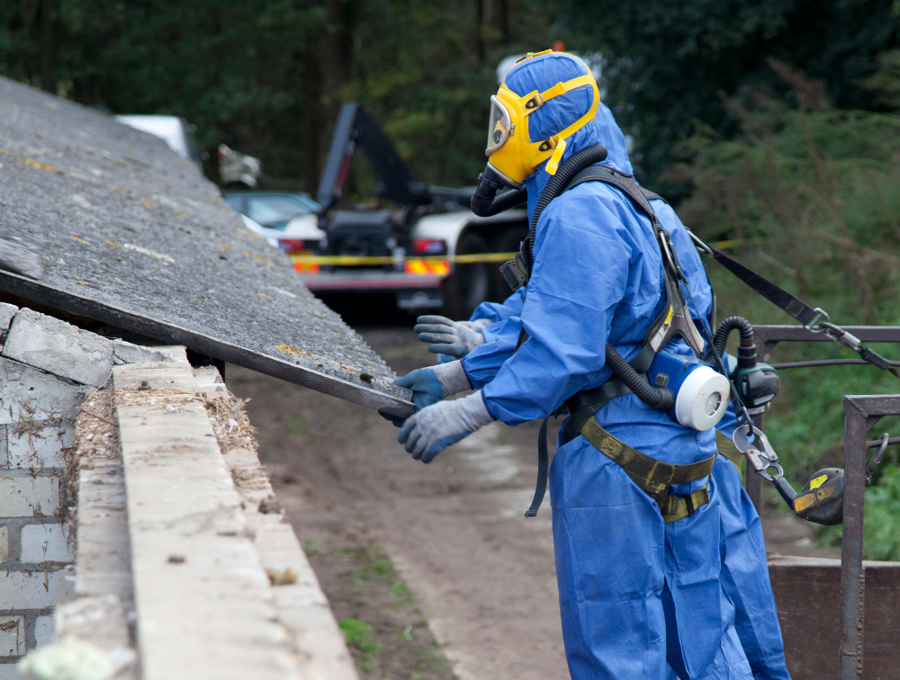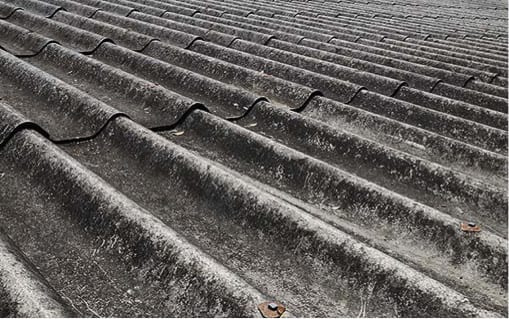Asbestos Roof Removal Timelines And Schedules What To Do If You Find Asbestos
Asbestos risk assessment is a critical process in making certain the safety and health of people potentially uncovered to asbestos. Asbestos, a naturally occurring mineral fiber, was broadly used in construction and insulation materials because of its fire-resistant properties and strength. However, its inhalation can result in severe health issues, together with lung cancer and asbestosis.
The key element of an asbestos risk assessment is figuring out places the place asbestos could be current. Common areas embody older buildings, faculties, and industrial facilities, many of which were constructed before the widespread regulations on asbestos use came into effect. Identifying materials which will comprise asbestos is essential to find out the extent of risk.
When conducting an asbestos risk assessment, it is important to understand the types of materials that sometimes contain asbestos. These can embrace insulation, roofing shingles, ground tiles, and textured paint. All of these materials pose important risks if they're friable, meaning they are often simply crumbled or pulverized into dust.
Asbestos Roofing Material Identification Diy Awareness For Asbestos Removal

Visual inspections are a vital first step in assessing the potential risk of asbestos exposure. Trained professionals search for seen signs of asbestos-containing materials. However, visual inspections alone are often insufficient. Air monitoring and sampling could also be necessary to confirm the presence of asbestos fibers.
After identifying potential asbestos-containing materials, the following step involves evaluating the situation of those materials. If they are intact and undisturbed, the chance could additionally be lower. However, broken materials requiring repair or removal pose a higher risk and ought to be handled promptly.
An accurate risk assessment will also consider the frequency and duration of exposure. Individuals who work in or near areas with potential asbestos risk should be notably vigilant. Understanding how usually and for a way long exposure might occur is important in evaluating the extent of the risk.
Local Regulations For Asbestos Handling Removal And Disposal Of Asbestos
Regulatory requirements additionally play a pivotal role in the evaluation process. Various companies, such as the Environmental Protection Agency (EPA) and the Occupational Safety and Health Administration (OSHA), provide guidelines that help shape risk assessments. Adhering to those requirements is significant for safeguarding human health.
If asbestos is detected and deemed in danger, a management plan shall be required. This plan might contain encapsulation, which seals the asbestos material and prevents fibers from turning into airborne, or full removal, which tends to be a extra expensive and disruptive option. The choice is dependent upon the kind of material, its condition, and the likelihood of disturbance.
Training and educating these involved within the risk assessment process can also be key. Workers ought to concentrate on the risks associated with asbestos exposure and skilled to identify potential risks. Proper training ensures that safety protocols are adopted, reducing the probability of exposure.
Furthermore, periodic re-assessment is necessary in environments where asbestos is current. As situations change over time, materials could degrade, affecting the extent of risk. Regular monitoring helps to maintain a safe environment and permits for well timed intervention when needed.
Aftercare Following Asbestos Roof Removal How To Get Your Roof Replaced For Under 1000
Involving stakeholders, including property owners, employers, and workers, is essential for effective risk management. A collaborative approach to understanding and mitigating asbestos risk fosters a tradition of safety and awareness. Open communication can considerably reduce the chances of exposure and health points arising from asbestos.

Overall, the importance of an asbestos risk assessment cannot be overstated - Understanding Asbestos Roof Hazards. It not only protects individual health but also contributes to broader public health safety. As awareness of the hazards associated with asbestos continues to grow, compliance with risk assessment best practices turns into even more critical
Asbestos Roof Removal Licenses And Accreditation Safe, Reliable And Experienced Removal Services
Strategies that emphasize prevention and mitigation of asbestos exposure can result in safer work and dwelling environments. Efforts to educate and inform the basic public in regards to the risks related to asbestos contribute considerably to a extra health-conscious society.
In conclusion, the method of conducting an asbestos risk assessment is integral for shielding individuals from potential harm. Understanding the presence and condition of asbestos-containing materials is paramount in assessing risks. Continuous monitoring and stakeholder engagement improve the effectiveness of management methods. As regulatory frameworks evolve and awareness grows, proactive measures in opposition to asbestos-related risks will assist in fostering safer environments for all.
Post Asbestos Roof Removal Cleaning Removal Of Asbestos Roof In Area
- Conduct a thorough inspection of buildings constructed before the Nineteen Eighties, as these are more than likely to contain asbestos-containing materials (ACMs).
- Utilize licensed asbestos professionals to gather samples and carry out laboratory testing for accurate identification of asbestos presence.
- Assess the situation of recognized ACMs, noting any harm, friability, or wear which will improve the danger of asbestos fiber launch into the air.
Asbestos Roof Disposal Regulations In Sydney What To Do If You Find Asbestos
- Create an in depth inventory of all asbestos materials inside a property, together with their locations, varieties, and quantities for future reference during management.
- Implement a management plan outlining procedures for controlling asbestos risks, including regular monitoring and maintenance of ACMs.
- Educate staff and tenants in regards to the potential dangers of asbestos exposure and the importance of adhering to safety protocols on-site.
Diy Asbestos Roof Removal Considerations Find A Licensed Asbestos Removalist
- Ensure compliance with native and federal regulations concerning asbestos dealing with, removal, and disposal to mitigate legal and health liabilities.
- Evaluate the surrounding environment and activities that could disturb ACMs, corresponding to renovations or demolitions, and develop particular safety measures.
- Plan for emergency response procedures in case of unintended disturbance of asbestos materials, guaranteeing that all personnel are skilled in instant containment and reporting protocols.
Importance Of Monitoring Air Quality During Removal Asbestos Roof Maintenance Services
- Conduct common reviews and updates of the risk assessment to accommodate any modifications in building occupancy, use, More hints or asbestos roof removal machinery and tools condition of asbestos materials.
What is asbestos risk assessment?undefinedAsbestos risk assessment is a systematic evaluation process to identify the presence of asbestos-containing materials in a building, assess the chance they pose to health, and decide applicable actions to manage or remediate any potential hazards.
Why is an asbestos risk assessment necessary?undefinedAn asbestos risk assessment is crucial to guard occupants and staff from potential exposure to asbestos fibers, which can result in critical health conditions, together with lung cancer and asbestosis. It helps ensure compliance with safety regulations.
How is an asbestos risk assessment conducted?undefinedThe assessment entails inspecting the property for materials which will comprise asbestos, sampling these materials for laboratory analysis, and evaluating the degree of risk based mostly on the condition and location of the asbestos.
Who ought to perform an asbestos risk assessment?undefinedA certified professional, typically an accredited asbestos inspector or an industrial hygienist, should carry out the assessment. Their expertise ensures correct identification and risk analysis.
Asbestos Roof Removal Project Planning Removal & Replacement Of Roof Asbestos
What are the signs that an asbestos risk assessment is needed?undefinedSigns embody the presence of building materials installed earlier than the Nineteen Eighties, visible harm to materials like insulation or roofing, or when renovations or demolition are planned in older constructions.
How often ought to asbestos risk assessments be updated?undefinedRisk assessments ought to be reviewed and updated every three to 5 years or after any important renovation, damage, or disturbance of asbestos-containing materials. Frequent updates guarantee ongoing safety.
What should I do if my property has identified asbestos?undefinedIf asbestos is recognized, it is important to administer it appropriately. Options include encapsulation (sealing) or removal by licensed professionals, depending on the fabric's condition and site.
Asbestos Risk Mitigation During Roofing Projects What To Do If You Find Asbestos
What is the cost of an asbestos risk assessment?undefinedThe cost can range based on factors such because the property's dimension, the complexity of the assessment, and local rates, nevertheless it usually ranges from a couple of hundred to a few thousand dollars. - Asbestos Roof Encapsulation Alternatives
Are there legal requirements for asbestos risk assessments?undefinedYes, many jurisdictions have regulations mandating asbestos risk assessments in commercial buildings and through renovations or demolition activities, to guard public health and safety.
Post Asbestos Roof Removal Cleaning How To Get Your Roof Replaced For Under 1000
What are the potential penalties of not conducting an asbestos risk assessment?undefinedFailing to conduct an asbestos risk assessment can lead to legal penalties, exposure of occupants to harmful asbestos fibers, and potentially costly remediation after an sudden release of asbestos.